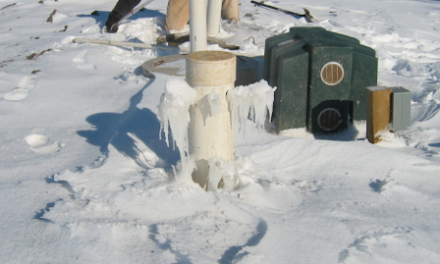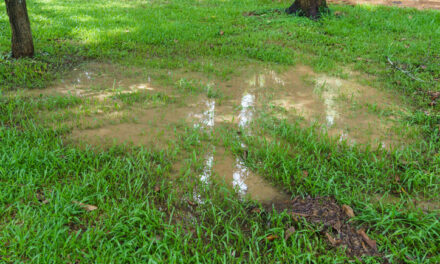You know you have a sewer system and you know it has something to do with wastewater, but what exactly happens to that water as it passes through? Where does it go? How does it get to the city’s sewer system? Though you may not need to know the intricate workings of your sewer system in order to make sure it functions properly, it’s still helpful to know the different sewer system parts so you can have some understanding of what happens to your wastewater.
1. Drainpipe
The first part of your wastewater’s journey begins at the literal drain–that piece that you see at the floor of your shower or tub, or in the basin of your sink. You usually have some sort of covering on it to protect larger objects from getting washed down the drain. The pipe right at the mouth of the drain is known as the drain pipe. Water from your tub, sink, washing machine, or toilet descends into the drainpipe until it hits a curve. Which brings us to the next stop.
2. Traps
Traps do exactly what they sound like. They trap standing water and keep smelly gasses from ascending up the drainpipe and into your home. The standing water acts as a barrier to these gases, and you may start to smell a faint sewage smell if this water begins to evaporate. Clogs can also happen in this area.
3. Branch Drain Lines
From the traps, wastewater enters horizontal pipes called branch drain lines. These pipes must slant at a downward pitch to facilitate the continued movement of your wastewater. Eventually, the branch drain lines will all lead to the main drain line. Clogs most often happen in branch drain lines, and are usually easy to repair, especially with the help of a professional.
4. Soil Stacks and Ventilation
Your wastewater then drops off from the branch drain line into vertical pipes called soil stacks. These soil stacks, or main drain stacks, take your wastewater and other solid waste into the main sewer line and on to the sewer and septic system of your city. The tops of the soil stack pipes are actually vented and go up through your roof to let out harmful fumes and maintain a balanced air pressure within your sewer system. This allows waste to move easily downward throughout the system without pulling behind it the important standing water from the drain traps.
5. The Clean-Out
The sewer line clean-out is an area outside your home or in your basement where you can access your main line in the event of a clog. Most of the time, you will not need to use the clean-out, but it is useful to know where it is located and how to open it. If you do have a clog and don’t feel comfortable clearing it yourself, a professional can do this for you.
6. Main Drain Line
Once your wastewater leaves the soil stack of a branch drain line, it enters the main drain line. This pipe is larger in diameter than the other pipes in your sewer system and is the destination of your branch drain lines. A clog in a branch drain line may only affect one toilet or sink, but a clog in a main drain line can affect several areas in your home. If you have water backing up or slowly draining in multiple places, you know you have a main line clog.
7. Sewer Main
Your wastewater has now left the premises of your property and entered your city’s main sewer line. This line serves multiple homes and businesses in your area, and clogs here can have a huge effect on nearby buildings. However, any clog that happens in the city’s main sewer line is not your responsibility to fix.
Why Know the Parts of Your Sewer System
Your home’s sewer system is intricate, and it works well to keep your home safe and free of stinky odors and noxious fumes. Clogs are common, and they should never be ignored. Sometimes they are easy to fix yourself through the use of a plunger or a snake, but often they require the help of a professional, such as the ones at A&L Cesspool. Now that you know the parts of your sewer system, you’ll have a much better idea of what’s happening if you do experience any issues! As always, our professionals are here to help you with all of your sewer system needs!


![Parts of Your Sewer System [The Ultimate Guide]](https://alcesspool.com/wp-content/uploads/2022/04/sewersystemunderhome.jpg)






